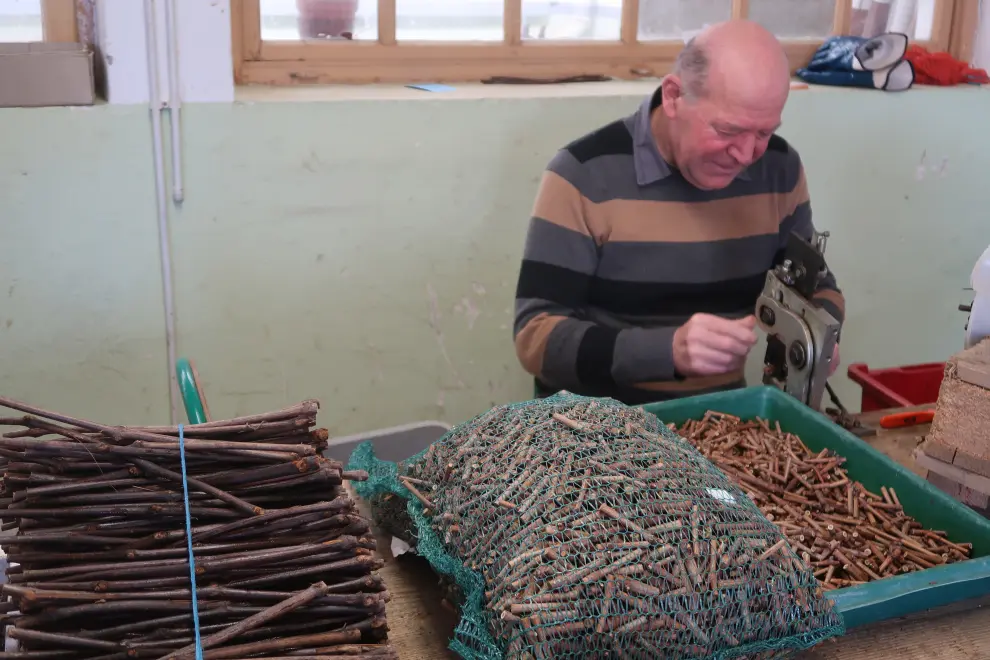Nursed in Vipava Valley, vines exported world-wide
One of Slovenia's premier wine-growing regions, the Vipava Valley has a vine grafting tradition going back almost 120 years. Today, their grafted vines are sold world-wide, the lion's share to France, the world's leading wine-producing country.
Grafting is a technique that joins the tissues of two plants together so they continue to grow as one plant. The upper part of the joined plant, the scion will give the grape its varietal characteristics and the rootstock should make sure the vine is healthy and pest-free.
After a vine louse, later named phylloxera, was brought to Europe along with live vines from America in the second half of the 19th century and the pest nearly annihilated the Old Continent's viticulture, European winegrowers started grafting the scions of their noble vines onto the American rootstocks, which were resistant to the pest.
The Vipava Valley being known in Vienna for its fine wines, the Austro-Hungarian monarchy deployed the Skalicki brothers to Vrhpolje, on the northern outskirts of the valley, to teach the local growers how to graft their vines. In 1905, the brothers founded a grafting association, laying the foundation for nursery development in Vrhpolje.
The development was slowed down by the First World War and the Vipava Valley becoming part of Italy, which was not keen to allow further development grapevine nursery in Vrhpolje.
Founded in 1946, just after the Second World War, the Vrhpolje Agricultural Cooperative resumed grafted vine production and later opened a modern facility called Trsnica Vrhpolje, which would remain a vital part of the development of viticulture in the region and countrywide.
After Slovenia's independence, fifty vinegrowers established an independent grapevine nursery cooperative Trsnica Vrhpolje in 1994, its main business being production of scions and rootstocks as base materials and grafted vines as the end products.
"Over the past twenty years, we have taken the cooperative and the grapevine nursery to the international stage. Today, we export 90% of our production," Jože Žgur, director of the Trsničarska Zadruga Vrhpolje cooperative, has told the STA.
Their main market is France, in particular the dry parts of southern France, accounting for 80% of their sales. They also export grafted vines to Italy, Austria, Croatia, Serbia and Bulgaria and most recently again to the Czech Republic.

Jože Žgur, director of the Trsničarska Zadruga Vrhpolje cooperative, preparing vine grafts. Photo: STA
This year - vines are planted between November and March - there has been substantial demand mainly for Chardonnay, says Žgur, with 80% of all Chardonnay vines sold to France. For major foreign clients, they also produce grafted vines of varieties not known in Slovenia.
"The highest demand at the moment is again for white varieties. Of the reds, we mostly sell the grafted vines of Merlot and Cabernet Sauvignon, and certain French varieties such as Marselan, Caladoc and their own specific varieties," Žgur said.
They could produce even more vine grafts if the cooperative and its partners had more farmland available for the nursing. "We don't have our own land, but we lease 7.5 hectares from the Farmland Fund. We also cooperate with 12 farms which graft vines, there's a total of 22 of us who grow the rootstocks and scions," Žgur says.
To produce first-class rootstock and scion material, they carefully pick them based on a five-year mass selection from vineyards all over the Vipava Valley, Goriška Brda, Kras and the Koper area as a basis for selection of best clones.
The cooperative employs four people. Last year they produced 1.26 million grafted vines. "What we produce for exports, mainly for France and Austria, is all to order. Sales depend on which part of the year we sell the vines in, but currently we sell up to 1.5 million euros' worth per year."
Old vineyards in Slovenia do not tend to be renewed these days, one of the most important reasons probably being the low grape pricing policy. "Another reason is the change of generations, as older growers are no longer renewing their vineyards," says Zgur.
In the western region of Primorska, part of which is the Vipava Valley, vineyard areas have been reduced by 15% in the last ten years and abandoned vineyards are becoming overgrown.


